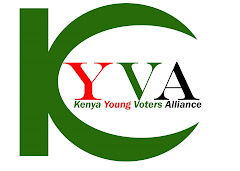KYVA is a conglomerate of organizations and individuals committed to ensuring that Kenya as a country manages to achieve set developmental goals to meet both the international and national targets. The idea was mooted by the (SONU) leadership of 2003/4. KYVA leadership is composed of diverse backgrounds and experiences. We urge all Kenyan youths to take charge of leadership at the counties and national levels. Register as voters and vote in large numbers for young visionary leaders.
Friday, December 18, 2009
THE CLOSURE OF PAN PAPER MILLS (WEBUYE) IS A BLESSING IN DISGUISE.
Dear Sir/Madam,
Even as we haggle over the reopening of the Pan Paper Mills in Webuye, the voice of those who think that its closure is a blessing in disguise must not be hushed. It is true that the Plant provided a livelihood to the over 80,000 residents of the town and beyond. But it is also true that this Plant was a terrible health hazard to the many innocent residents. Emissions from this plant have been known to damage people`s lungs; lowering their resistance to diseases like pneumonia and influenza. Seepage from the sulfide ponds to the Nzoia River which is the source of domestic water to the residents is a fact that cannot be wished away. Furthermore, cases of increased skin ailments have also been noted.
Yes, that Pan Paper Mill has been dishing out doses of slow death is not in doubt. Records from the health facilities within the town and its environs confirm that respiratory diseases especially among the infants and the elderly have been on a steady increase and so is the resultant mortality rate.
Moreover, rusting of corrugated iron sheets is a common phenomenon. The residents are forced to replace the iron sheets on their houses more often than it is necessary.
Yet even without scientific proof of the level of pollution and its attendant poisonous gases, any Tom, Dick and Harry would attest to the fact that it was extremely difficult to gulp a mouthful of fresh air in Webuye town and its environs. Foul smell filled the air and could be smelled as far as 80Km away depending on the direction of the wind. But that was not the only thing, "snowstorms" of foam droplets from the plant`s waste ponds clouded the sky.
Yet, being the only source of livelihood of this town, people were forced to choose between two devils: Pangs of hunger or a plate of food courtesy of the poison spewing Mill. Out of necessity, they chose the latter. Unbeknown to them, they had chosen to be slaves in a poisonous gaseous chamber.
An analysis of the town`s air samples and the factories pulp were taken for laboratory analysis in California. The results of the analysis were a downright shocker. The hydrogen sulfide level was more than 140 times over and above the permissible standard by the World Health Organization (WHO). Startled by these findings, and aware of the financial loses that the shareholders were to incur as a result of the inevitable closure of the plant, and cognizant of the litany of litigations for compensation that were to follow, the Government disowned the findings and branded the whole exercise a conspiracy by the environmental activists, nay fraudsters.
Thanks to the rampant corruption and mismanagement the plant finally ground to a halt. With its closure followed intriguing political promises about its reopening. But what the Government does not want to admit is that the closure of the plant put it in a catch 22 situation. Even if it was to keep the opportunists at bay, still there are more moral questions that the Government has to contend with.
First, is the question of whether the Government should reopen the plant in total disregard of the scientific evidence with regard to the dangers that this plant exposes people.
Second, even if we presuppose that the management will be streamlined; would it not be prudent for the Government to minimize the hazardous emissions first before the plant reopens? And, will the minimization of pollution levels be cost effective?
Three, knowing very well that the plant`s consumption of trees far outpaces the rate at which trees are replanted, shall we not be going against our resolve of conserving our vital water towers?
In view of the foregoing, it is my considered view that the social impact assessment, environmental impact assessment and the cost benefit analysis associated with the reopening of the plant are all in the negative.
Aware of these issues, the Government must not keep the hopes of the resident alive. It must take a bold step and inform them that it is in their own interest and that of the country that the plant is not reopened.
TOME FRANCIS,
BUMULA CONSTITUENCY.
http://twitter.com/tomefrancis
Subscribe to:
Comments (Atom)
